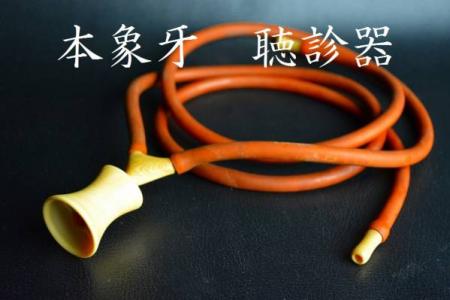. Legends and Tales from Japan 伝説 - Introduction .
:::::::::::::::::::::::::::::::::::::::::::::::::::::::::::::::::::::::::::::::::::::::::::::::::::::::::::::::::::::::::::::::::::::::::::::::::::::::::::::::::::::::::::
zooge 象牙 ivory, Elfenbein
The best-known item of ivory is maybe the
. Netsuke 根付 miniatur sculptures .
- Introduction -
. zoo 象 elephant, der Elefant .
- Introduction -
CLICK for more Daruma san from Ivory !
The international ivory trade
- - - More in the WIKIPEDIA !
:::::::::::::::::::::::::::::::::::::::::::::::::::::::::::::::::::::::::::::::::::::::::::::::::::::::::::::::::::::::::::::::::::::::::::::::::::::::::::::::::::::::::::
quote
Edo Zooge 江戸象牙 Edo Zoge, Ivory Carvings
Traditional Technologies and Techniques
1 - When shaping a piece of Edo Zoge (ivory carving), after both the development of a plan and the application of carver’s ink, the shape is roughly carved by hand using tools including saws and chisels, etc.
2 - The traditional techniques used (for both the finishing and patterning of ivory pieces) include 線彫り line carving, あらし模様彫り rough-patterned carving, 布目模様彫り textured-patterned carving, 平彫り flat carving, 芝山彫り Shibayama carving (the use of inlays), and 透かし彫り open-work carving.
3 - When ivory pieces are jointed, the following techniques are used:
① はぎ合せは Matching and doweling techniques are used when carving stationary pieces.
② 撥(ばち) When working with ivory that has undergone bachiru coloring (a traditional coloring technique), jointing is done using a cementing agent.
4 - 磨き Polishing techniques use トクサ scouring rushes, the leaves of the ムクの葉 muku tree and 角の粉 angular powder, etc.
5 - The dyeing of colors into ivory involves the use of natural dyeing agents such as yashabushi (green alder), etc.

■Traditionally Used Raw Materials
象牙 Ivory
■History and Characteristics
In that ivory possesses a smooth texture, beautiful luster, the subtleness of vein patterning and ideal hardness; it offers everything that is required of a superior material for traditional crafts. As such, since ancient times it has been highly-prized in both Eastern and Western cultures.
In Ancient Egypt, ivory created opulent furniture and personal ornaments; in Ancient Greece and Rome, it was the material from which countless deity statues were fashioned. Ivory also has a rich usage tradition in China. With large volumes imported by China from India and Thailand during the thriving commerce of the Sui and Tang Dynasties, ivory was a material that came to be loved by the ruling classes, it being employed by the Chinese to create decorative furniture among other forms.
Based on ivory pieces held by the 正倉院 Shoso-in (the treasure house of the Todai-ji Temple in Nara Prefecture), it can be understood that Chinese carving techniques were conveyed to Japan during the Nara Period (710-794). Within the Shoso-in collection, there is a 儀礼用の物差し rule (a scepter) used in religious ceremonies that features intricate ivory carvings. There are also 琵琶の撥 Biwa (Japanese lute) plectrums, and stones for the 碁石 board game of go, etc., all of which have been fashioned from ivory.
Furthermore, in that the Shoso-in also possesses samples of unprocessed ivory (in its natural state), it is possible to appreciate that processing and the creation of ivory pieces was also conducted in Japan in ancient times.
To explain what ivory is, it represents the grown tusks of elephants, with large examples being three to four meters in length, and sometimes weighing between 40 to 60 kilograms. The tusks of female elephants tend to be narrow and long, while the tusks of males are both strong and thick.
It is said that ivory product manufacture in Japan commenced with spoons and other accoutrements (such as container covers used in the tea ceremony). During the middle of the Edo Period (1603-1868), ivory pieces came to be widely used, with items such as netsuke, 髪飾 hair ornaments and 三味線撥 samisen plectrums, etc., coming into use.
This resulted in ivory being loved by people of many different classes from the samurai to the townsfolk of Edo.
Tokyo Ivory Arts and Crafts Association
source : sangyo-rodo.metro.tokyo.jp/shoko
. Shiokumi 汐汲 "Salt Scooping Girl" .
:::::::::::::::::::::::::::::::::::::::::::::::::::::::::::::::::::::::::::::::::::::::::::::::::::::::::::::::::::::::::::::::::::::::::::::::::::::::::::::::::::::::::::

. . . CLICK here for Photos !
. Reference : ivory japan .
:::::::::::::::::::::::::::::::::::::::::::::::::::::::::::::::::::::::::::::::::::::::::::::::::::::::::::::::::::::::::::::::::::::::::::::::::::::::::::::::::::::::::::
. Legends and Tales from Japan 伝説 - Introduction .
................................................................................. Toyama 富山県
柳町 Yanagimachi
If the bones of a fish get stuck in the throught, you have to rub a piece of ivory on the neck from outside. Then say the 呪文 special spell:
nadesaru nadesaru ナデサレ、ナデサレ rub and go away, rub and go away
................................................................................. Yamanashi 山梨県
白州町 Hakushu
Once there was a thief in Matsubayashi. When he came to the house of Grandma, she looked for her 象牙のかんざし hairpin of ivory to chase him away, And he left fast.
A hairpin from ivory is a powerful amulet to ward off evil.
CLICK for more photos !
.......................................................................
- reference : nichibun yokai database 妖怪データベース -
:::::::::::::::::::::::::::::::::::::::::::::::::::::::::::::::::::::::::::::::::::::::::::::::::::::::::::::::::::::::::::::::::::::::::::::::::::::::::::::::::::::::::::
- - - - - HAIKU - - - - -
zooge no hashi 象牙の箸 ivory chopsticks

野分あと象牙の箸の重きこと
nowaki ato zooge no hashi no omoki koto
after the typhoon -
the ivory chopsticks
feel so heavy
Nakamura Akiko 中村明子
水飯や象牙の箸を鳴らしけり 吾空
豆飯や長寿の父の象牙箸 高橋悦男
湯豆腐に添へてひそかや象牙箸 久米正雄
煮こごりや夫の象牙の箸づかひ 及川 貞
煮凝や象牙の箸の父あらば 伊丹さち子
煮鮑に厄日の象牙箸重き 長谷川かな女
銀の匙象牙の箸やクリスマス 太田育子
露の夜の象牙の箸に儒者がいる 渋谷道
. hashi, ohashi, o-hashi お箸 chopsticks .
..............................................................................................................................................
zooge no too 象牙の塔 tour d'ivor, ivory tower, Elfenbeinturm

塩鰯啖つて象牙の塔を去らず 竹下しづ
亀鳴くと夕べ象牙の塔を鎖す 佐伯哲草
象牙の塔夜に入りて雪限りなし 鈴木六林男
結氷の象牙の塔にうずくまる 八木三日女
..............................................................................................................................................
zooge no in 象牙の印 name seal, stamp

鳥雲に象牙の印の尻滑らか 田川飛旅子
指で磨く御用始めの象牙印 岡本六弥太
..............................................................................................................................................
zoogegushi 象牙櫛 ivory comb

如月やみどりいろして象牙櫛
kisaragi ya midori-iro shite zoogegushi
second lunar month -
the ivory comb looks
a bit green
影島智子 Kageshima Tomoko
..............................................................................................................................................
zooge no chooshinki 象牙の聴診器 ivory stethoskop

花冷や吾に象牙の聴診器
水原春郎
..............................................................................................................................................
象牙婚 ivory wedding anniversary after 14 years

象牙婚孔雀まで来て春日浴ぶ
松山足羽
..............................................................................................................................................
- reference : haikureikudb -
:::::::::::::::::::::::::::::::::::::::::::::::::::::::::::::::::::::::::::::::::::::::::::::::::::::::::::::::::::::::::::::::::::::::::::::::::::::::::::::::::::::::::::
. Join the MINGEI group on facebook ! .
. Regional Folk Toys from Japan .
. Japan - Shrines and Temples .
. Tohoku after the BIG earthquake March 11, 2011
[ . BACK to WORLDKIGO . TOP . ]
[ . BACK to DARUMA MUSEUM TOP . ]
- - - #zooge #ivory #elfenbein #netsuke - - - - -
:::::::::::::::::::::::::::::::::::::::::::::::::::::::::::::::::::::::::::::::::::::::::::::::::::::::::::::::::::::::::::::::::::::::::::::::::::::::::::::::::::::::::::
No comments:
Post a Comment